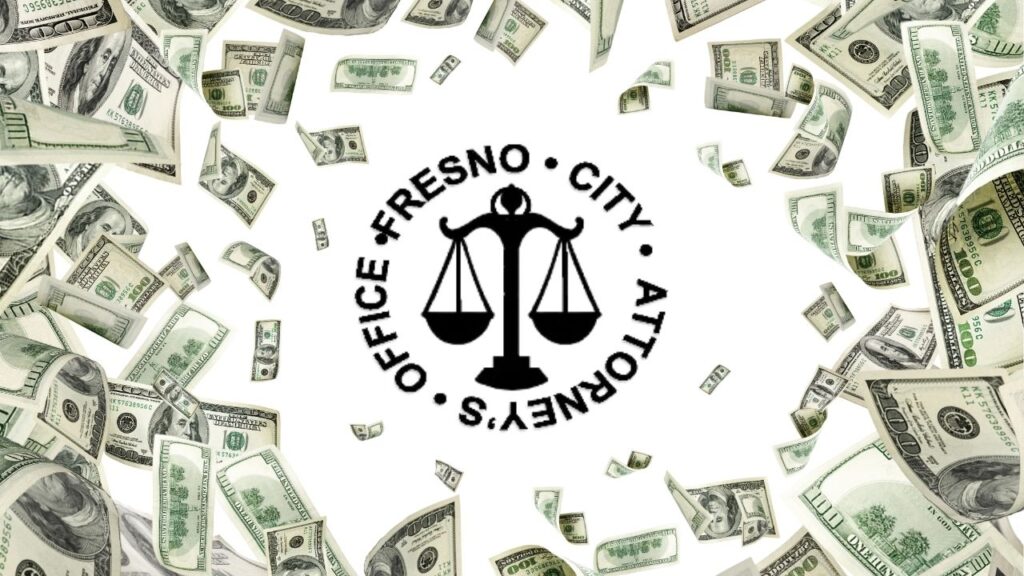Fresno Unified voters will have to weigh the need for school improvements against a hike in their property tax rate. (GV Wire Illustration/Paul Marshall)

- The Nov. 5 ballot could be the first ever with bond measures from each of the four school districts that serve parts of the city of Fresno.
- The Fresno and Sanger school boards approved bond measure resolutions last month that could result in tax rate hikes.
- Clovis and Central school boards will vote this month on bond measure resolutions that would not raise tax rates.
Share
|
Getting your Trinity Audio player ready...
|
November’s ballot could be the first ever to include bond measures from each of the four school districts that serve parts of the city of Fresno.
And, for some Fresno voters, a yes vote could result in a hike in their property tax rate.
Fresno Unified’s $500 million bond measure — the biggest ever for any school district in Fresno County —and a $175 million bond measure proposed for Sanger Unified School District have already won unanimous approval from their seven-member School Boards.
Clovis Unified’s School Board will take up the district’s proposed $400 million bond measure at Wednesday’s meeting, and the Central Unified School Board could consider a $109 million bond measure at its July 23 meeting. The Clovis meeting will start at 6:30 p.m. and be held in the boardroom of the Professional Development Building, 1680 David E. Cook Way, Clovis.
The districts are facing an Aug. 9 deadline to get the required paperwork to the Fresno County Registrar of Voters for the bond measure resolutions to be included on the Nov. 5 ballot. That same ballot will include Proposition 2, a statewide measure to issue $10 billion in bonds to build and modernize facilities at K-12 schools and community colleges. K-12 schools would get $8.5 billion and community colleges the remaining $1.5 billion. The proposition was put on the ballot by state legislators.
Why are local bond measures important? State funding for school facilities typically is available on a matching basis, which gives a leg up to school districts that can convince voters to approve bond measures. They are financed through property taxes and can take decades to pay off.
In addition to paying for new schools, bond measure money pays for upgrades at older schools, replacement of aging HVAC systems, new cafeterias and gyms, and other school improvements.
If Prop. 2 passes, school districts with successful local bond measures will be ready to submit applications for matching funding for their projects.
“That’s a big motivator,” Sanger Unified Deputy Superintendent Eduardo Martinez said Monday “If you don’t have money (to put on the table), it’s going to somebody else.”
Related Story: FUSD Interim Supt. Misty Her Unveils 100-Day Plan for Improved Learning
Bond Measures May Boost Tax Rates
Two of the four bond measures awaiting votes from their School Boards would maintain tax rates at current levels, according to the measure resolutions.
Central Unified’s tax rate is the highest in Fresno County at $215.60 per $100,000 assessed valuation. For a home assessed at $300,000 by Fresno County, the portion of the homeowner’s tax bill going to Central Unified would total $646.80.
Likewise, Clovis Unified’s tax rate would remain at $155.35 if a new bond measure gets voter approval.
Fresno Unified’s resolution says that the tax rate would climb by $25, which would raise the total tax rate to $238.86 per $100,000 of assessed valuation and would put it at or near the top among Fresno County school districts, depending on what happens with Sanger’s tax rate. Fresno’s estimated average annual tax rate to finance the $500 million bond measure would be $58.20 per $100,000 assessed valuation, according to the bond measure resolution.
Sanger Unified officials on Monday were unable to provide an estimate of how much the $175 million bond measure would raise the tax rate. According to the resolution, the district’s best estimate of the average tax rate required for this bond measure would be $60 per $100,000 assessed valuation — the maximum allowed by law — and that would come on top of the taxes that are still being levied to cover the cost of prior bond measures for a few years more.
Sanger Unified’s tax bill currently is $203.88 per $100,000, the third-highest in the county.
Martinez said he could not estimate how much the tax rate would increase, “not without a clear schedule of when we would sell and issue bonds.”
Central Unified’s pending resolution says that the best estimate of the average tax rate to cover the costs of the $109 million bond measure would be $49.33 per $100,000 assessed valuation, while Clovis’ pending resolution pegs the estimated tax rate to cover the $400 million bond measure at $46.50 per $100,000.
Past Bond Measure Successes and Failures
Unlike other tax proposals that require two-thirds approval by voters, most school bond measures only need capture 55% of “yes” votes to pass.
All four of the Fresno-area school districts had successful bond measures in 2020, although Clovis and Central’s first attempts on the March primary ballot were not successful. Fresno Unified voters approved the $325 million Measure M by nearly a 60% margin on that ballot.
Clovis trimmed its Measure A proposal from $408 million on the March ballot to $335 million on the November ballot, where it passed with 60% approval. The district’s pending bond measure resolution specifically requests that it be named Measure A, which historically has been the letter designation for Clovis Unified bond measures. The decision, however, is up to the registrar of voters.
Central’s first attempt of a $120 million Measure C on the March ballot failed by the thinnest of margins, with 54.88% of voters casting yes votes, just shy of the 55% required minimum. The district used the intervening months to intensify its community lobbying. The $120 million bond measure was renamed Measure D for the November ballot, where it passed with about 60% of the votes cast.
Measure C on the November 2020 ballot was Sanger Unified’s $150 million bond measure, which passed with about 58% of the votes cast.
Related Story: Fresno Unified Provides Immunizations, Sports Physicals for Students
The City’s Many School Districts
Why is Fresno carved into so many different school districts? Such a thing is not uncommon in California. Stockton, for example, is served by Stockton Unified, Lincoln Unified, and Lodi Unified school districts.
Fresno’s original namesake district did not expand its boundary lines even as new neighborhoods were springing up in what had once been rural areas served by country schools. Those schools and their boundary terroritories were absorbed when districts combined and were unified. Fresno, for example, absorbed the Bullard area decades ago.
But territory north of Herndon Avenue west and east of Highway 41 wound up in Clovis Unified. And portions of northwest and west Fresno were absorbed into Central Unified. Meanwhile, both Clovis and Sanger unifieds have gained students as the city of Fresno expands to the southeast north and south of Highway 180.
School districts are not permitted to spend public money to advocate for bond measures but may provide educational materials to inform voters.
Sanger Unified makes use of a campaign committee. As in years past, Sanger Unified’s bond measure this year will be supported by Citizens for the Future of Sanger Schools, which has opened a campaign contribution committee. The committee typically raises $50,000 to $80,000 for the campaign, Martinez said.



















